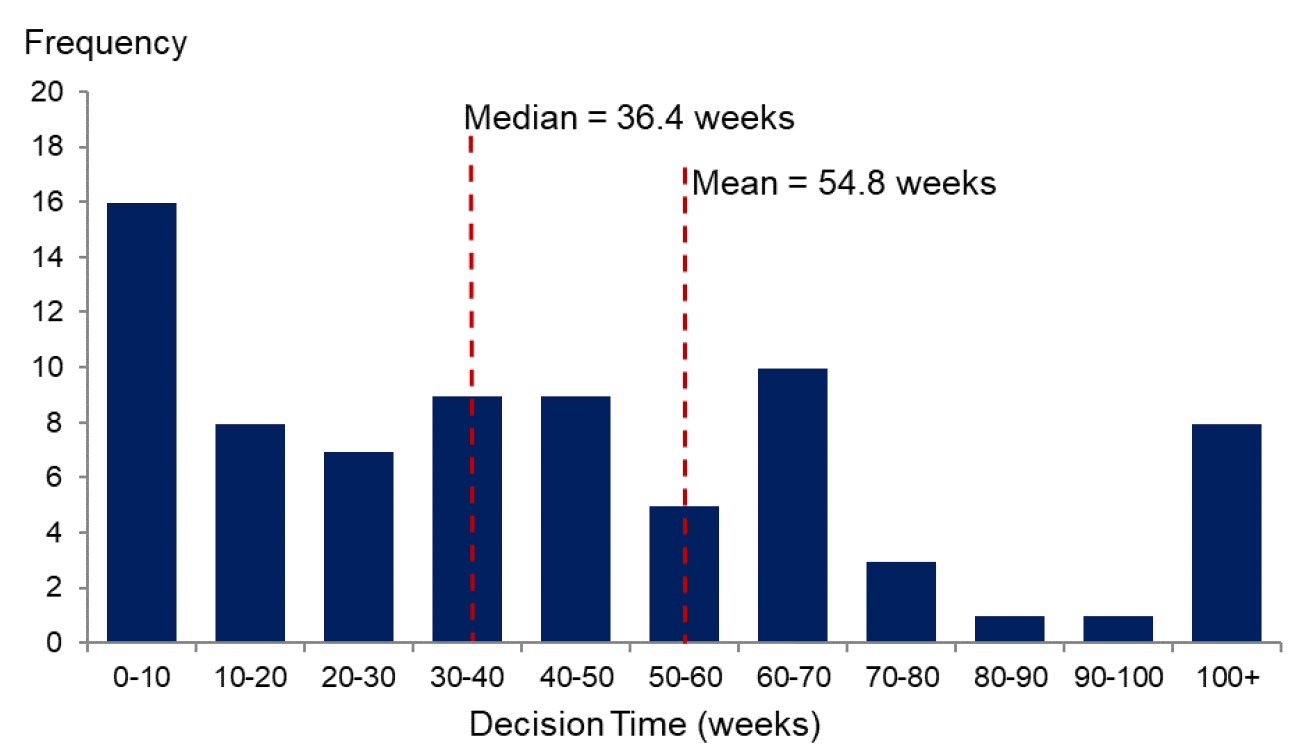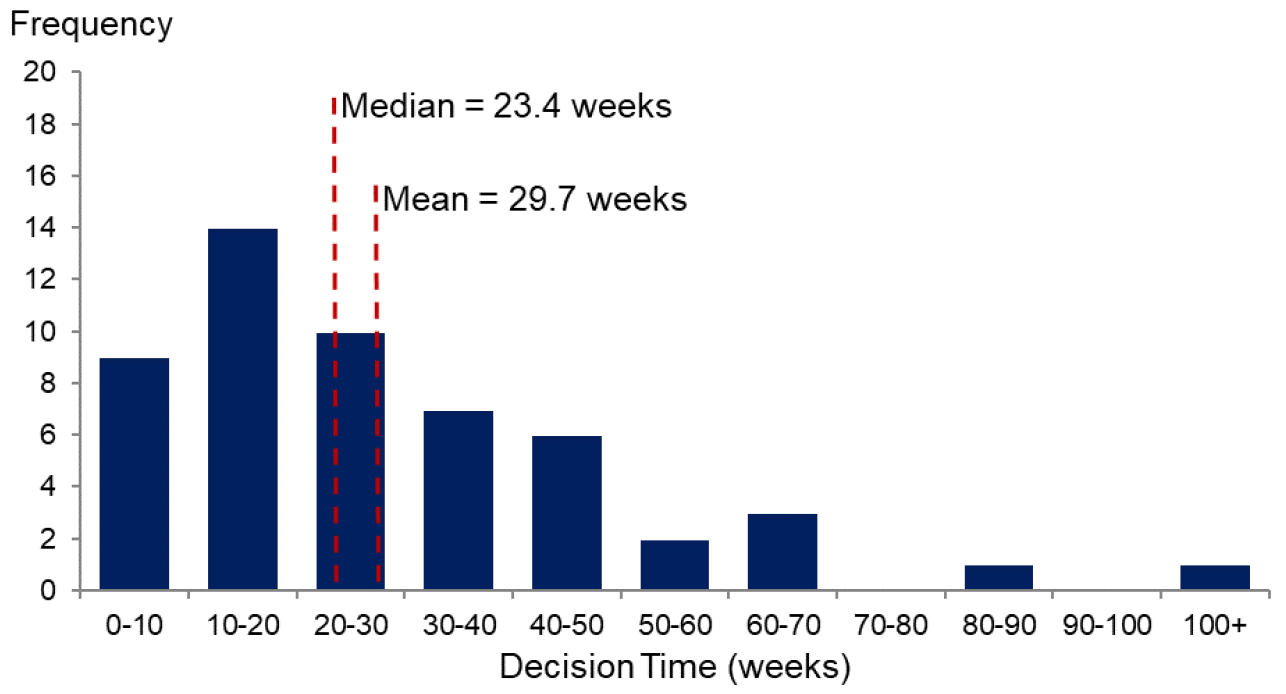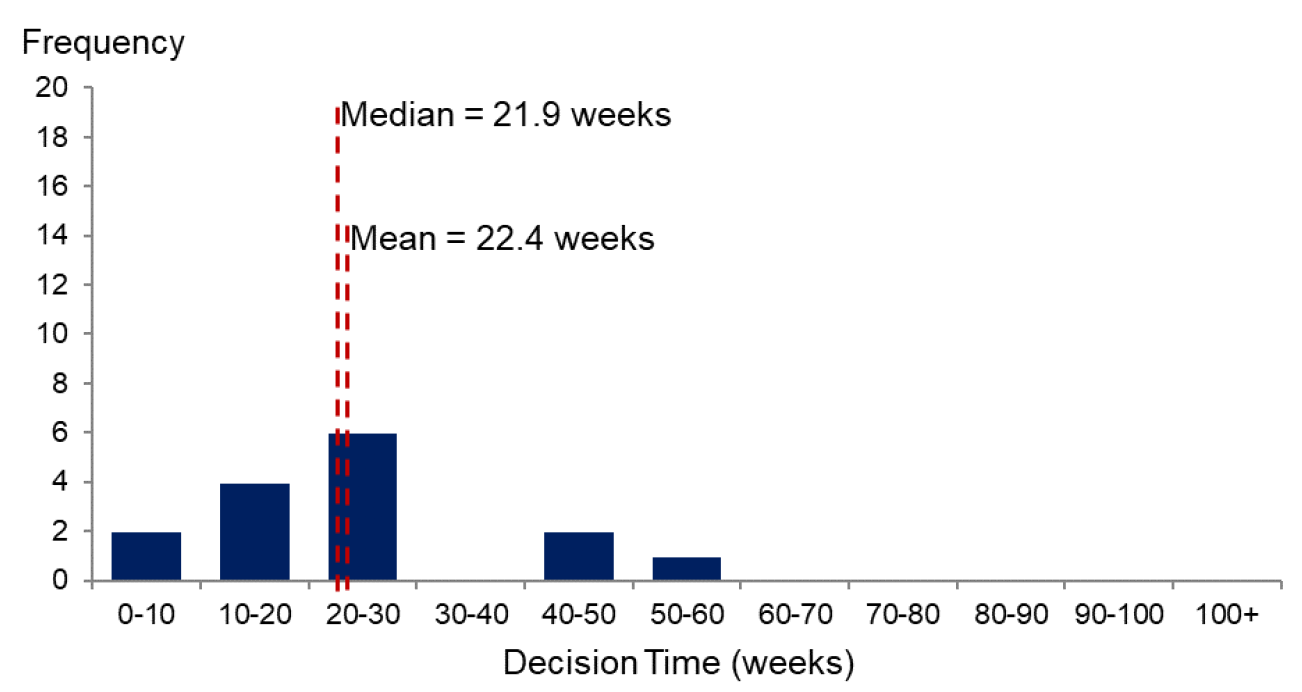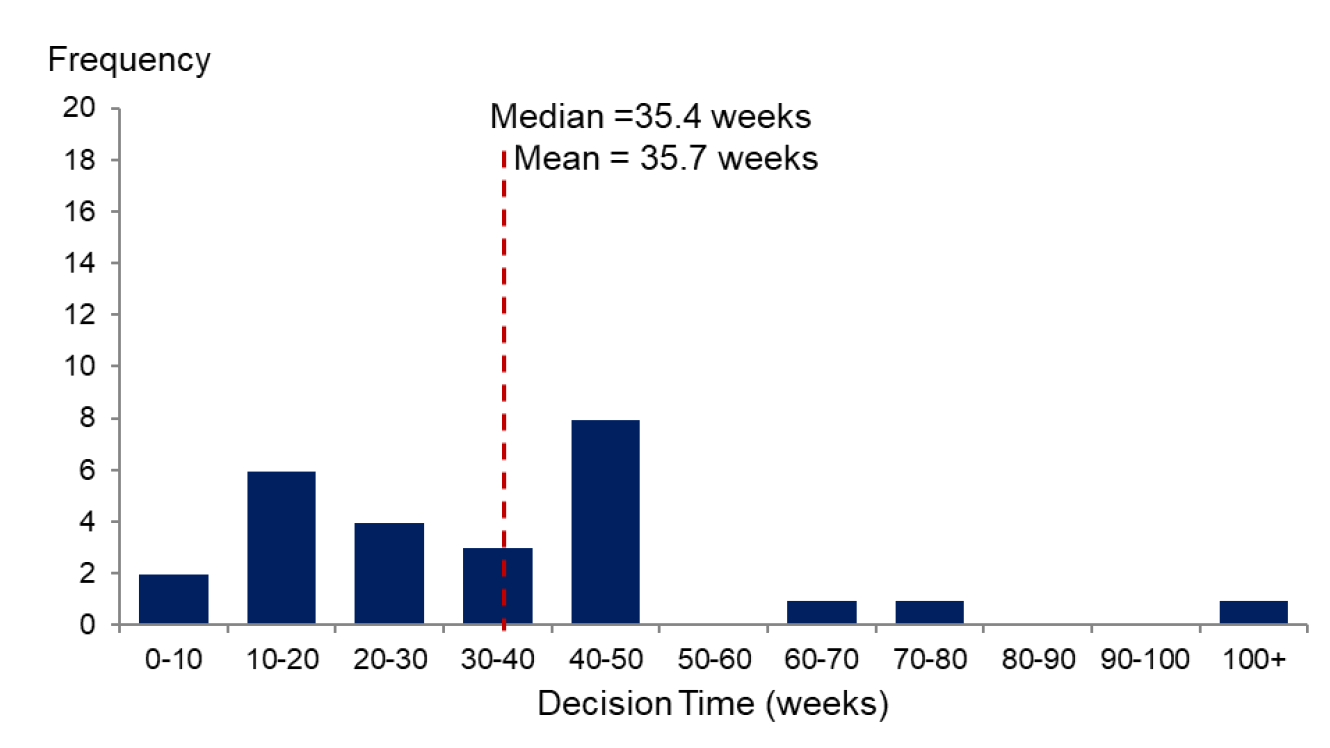Planning Performance Statistics 2020/21: Annual
Summary statistics on planning application decision-making timescales for 2020/21 with historic data going back to 2012/13. It is based on data collected by the Scottish Government from Local and Planning Authorities as part of the Planning Performance Framework (introduced in 2012).
This document is part of a collection
13. Annex
13.1. Distribution of decision times for major applications

The vertical line at 54.8 weeks shows the mean (average) decision time for major housing developments. The second line at 36.4 weeks shows the median decision time. Decision times range from two weeks to just under 10 years. The mean decision time has been influenced by several lengthy decisions. 68% (52 of 77) of major housing applications were decided in a time quicker than the average of 54.8 weeks and 27% (21 of 77) were decided within four months.
Eight decisions took more than two years, the longest taking 9.9 years. The average decision times for the eight lengthiest decisions were 514.1 weeks (9.9 years), 298.0 weeks (5.7 years), 220.9 weeks (4.2 years), 213.7 weeks (4.1 years), 190.6 weeks (3.7 years), 118.6 weeks (2.3 years), 116.4 weeks (2.2 years) and 104.9 (2.0 years). A further 19 applications took over a year.
If the two applications taking over five years are excluded the average decision time for the remaining 75 applications is 45.4 weeks, more than nine weeks quicker. If the five taking more than three years are excluded the time for the remaining 72 applications is 38.7 weeks more than 16 weeks quicker.
The lengthiest application was for planning permission in principle for development of land for houses, school and associated pitches, open space, play provision, landscaping, roads, paths and other infrastructure on a 53.7 hectare site in Clackmannanshire. The application was refused.
Chart 33 shows the distribution of the decision times for major other developments. The category "other developments" includes any developments not falling wholly within any of the specific categories of development for minerals, housing, business and industry, waste management, electricity generation, fish farming. It includes, but is not limited to, retail, leisure and entertainment, education, healthcare, community facilities, transport interchanges, water and drainage developments and projects. It can also include mixed use projects.

The vertical line at 29.7 weeks shows the mean (average) decision time for major other developments. The second line at 23.4 weeks shows the median decision time. Decision times range from 2.4 weeks to 138.7 weeks (2.7 years). The chart shows that the average decision time has been influenced by several lengthy decisions. Just over 60% of major other developments (32 of 53) were decided in a time quicker than the average of 29.7 weeks and 38% (20) were decided within four months.
One decision took more than two years, 138.7 weeks (2.7 years). A further six applications took over a year.
The lengthiest decision, which was in City of Edinburgh, was an application for planning permission in principle for a mixed use development including retail, financial, professional and other services, food and drink, business, hotels, residential and car parking. The application was approved.
Chart 34 shows the distribution of the decision times for major business and industry developments. The category " business and industry" developments includes construction of a building or structure for any of the following: use as an office, for research and development of products or processes, for any industrial process or for use for storage or as a distribution centre. To be classed as major the gross floor space as a result of the development must exceed 10,000 square metres or the site area must exceed 2 hectares. Due to the small numbers of applications for major business and industry developments, average decision times are very variable.

The vertical line at 22.4 weeks shows the mean (average) decision time for major business and industry developments. The second line at 21.9 weeks shows the median decision time. Decision times range from 8.6 weeks to 51.3 weeks. Nine of the 15 major business and industry applications (60%) were decided in a time quicker than the average with 40% (6) decided within four months. All applications were determined within a year.
The lengthiest decision, taking 51.3 weeks was in South Lanarkshire and was for planning permission in principle for a data centre and associated solar farm and gas turbine with light industrial area and associated infrastructure. The application was approved.
Chart 35 shows the distribution of the decision times for the remaining major applications that were concluded in 2020/21. These include applications for minerals, waste management, and electricity generation.

The vertical line shows the mean (average) decision time (35.4 weeks) and median decision time (35.7 weeks) for the remaining major developments. Decision times range from 8.4 weeks to 107.6 weeks (2.1 years). The average decision time has been skewed by a few lengthy decisions. Half (13 of 26) of the remaining major applications were decided in a time quicker than the average of 35.4 weeks, 31% (8) were decided within four months.
One decision took more than two years, 107.6 weeks (2.1 years). A further two applications took over a year.
The lengthiest decision taking more than two years was a minerals application to remove a condition from an exisiting planning permission to permit the importation and disposal of inert waste to enable the restoration of a quarry in Stirling.The application was approved.
13.2. Statistics for other UK countries
Information and statistics on planning applications for the other UK countries can be accessed at the following links:
England: https://www.gov.uk/government/collections/planning-applications-statistics
Wales: https://gov.wales/planning-services-performance
Northern Ireland: https://www.infrastructure-ni.gov.uk/articles/planning-activity-statistics
Contact
Email: planning_stats@gov.scot
There is a problem
Thanks for your feedback